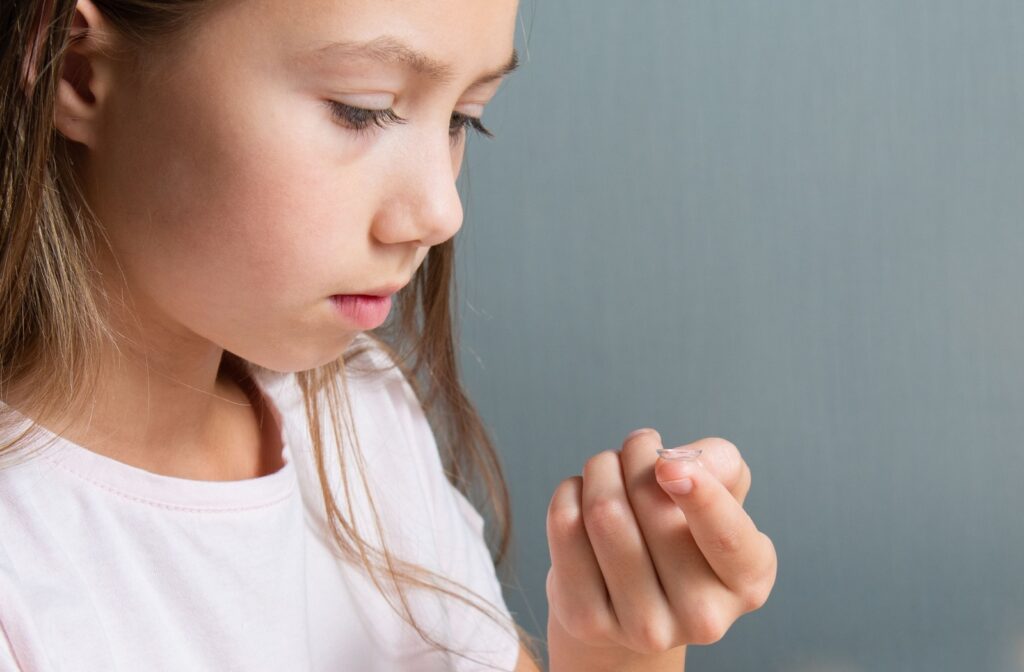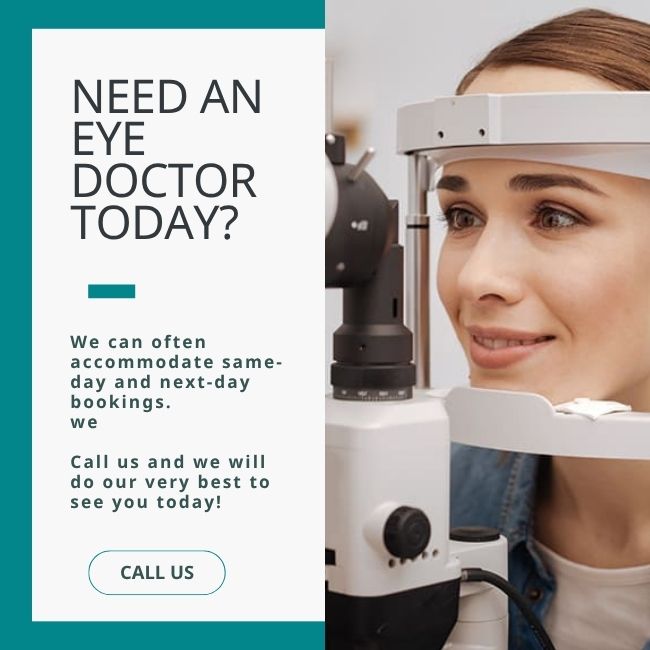Many people rely on glasses or contact lenses to see clearly. One of the most common reasons? Myopia, commonly known as nearsightedness.
Myopia makes it hard to see things far away—like road signs or the front of a classroom—while close-up tasks like reading or using a phone remain easy.
Myopia usually develops in early childhood and worsens until the eyes stop growing in early adulthood. While nearsightedness can’t be reversed, you can take steps to slow down how quickly myopia progresses.
Understanding myopia progression—and what you can do about it—can help protect your child’s long-term vision.
Why Does Myopia Develop?
Kids typically initially develop myopia between ages 6–12. The condition can progress through their teen years, sometimes into their early 20s.
Both genetics and lifestyle play central roles in myopia progression. Children with at least one nearsighted parent are more likely to develop myopia. Extended screen time and close-up tasks like reading can strain young eyes, encouraging myopia to worsen.
On the other hand, regular time spent outdoors can significantly benefit kids. Natural light supports healthy eye development, making outdoor play essential to help protect growing eyes.
What More Should I Know About Myopia?
Myopia happens when the eye grows too long, or the cornea (front of the eye) is too curved. The elongated shape changes how light focuses inside the eye. Instead of landing neatly on the retina (where clear vision happens), light focuses in front of it.
The result? Blurry distance vision.
People with myopia may also:
- Struggle to see distances clearly
- Squint to help focus blurry vision
- Feel eye strain or fatigue
- Get headaches after extended reading or screen time
Does Nearsightedness Get Worse With Age?
Many kids and teens experience myopia that gets worse as their eyes continue growing. The rate of progression varies for everyone, but it often slows once the eyes reach their full size in early adulthood.
That said, myopia can still worsen in adulthood, especially if:
- You spend long hours focused on close-up tasks (e.g. reading, computer work)
- You get little exposure to natural light
- You have a strong genetic predisposition
Even if you’ve had stable vision for years, lifestyle factors can still influence changes in your eyesight.
Why Myopia Progression Matters
Mild myopia isn’t typically dangerous, but high myopia is another story. When prescriptions reach or exceed -6.00 diopters, the risk of eye health complications rises significantly.
Higher levels of myopia can contribute to changes in the eye that lead to serious complications:
- Retinal detachment is when the light-sensitive retina pulls away from the back of the eye & can cause severe vision loss
- Glaucoma is commonly related to increased eye pressure that can damage the optic nerve & lead to complete vision loss
- Macular degeneration is when damage to the macula affects detailed vision, fades colours, & distorts lines
Innovative options like MiSight and ortho-k contact lenses can offer more than clearer vision. These specialized lenses are designed to help slow myopia progression, supporting your child’s sight now and into the future.
That’s why managing myopia early is so important—it helps reduce these risks in adulthood.

How Myopia Control Helps
While myopia can’t be cured, specialized treatments can help slow how quickly it progresses. Kids’ eyes are still growing and developing, so it’s crucial to manage myopia while their eyes are responsive to change and before they experience excessive progression.
By focusing on noninvasive, clinically proven options made just for kids, you’re setting the stage for clearer, healthier vision for years to come.
MiSight 1-Day Contact Lenses
MiSight lenses are soft daily contact lenses specifically created for children. They’re worn during the day and tossed out at night—no cleaning or storage is needed.
MiSight works in 2 ways:
- Correcting blurry vision so kids can see distances clearly
- Using a special dual-focus design to slow eye growth & help prevent high myopia
Studies show MiSight can slow myopia progression by up to 59%, making it an effective choice for young, active wearers looking for a no-maintenance routine.
Ortho-K Lenses (Orthokeratology)
Ortho-k involves wearing custom rigid, breathable contact lenses overnight. These lenses can gently reshape the cornea while your child sleeps, providing clear vision all day without daytime lenses or glasses.
Ortho-k is often ideal for active kids who play sports or don’t want to wear glasses or contacts during the day. It also offers powerful myopia control benefits backed by years of clinical research.
Myopia Control Glasses Lenses
Glasses can be a gentle and effective way to help manage myopia—especially for younger children or those who aren’t quite ready for contact lenses.
Multifocal lenses offer a noninvasive myopia treatment option. While they may not be as effective as multifocal contact lenses, they’re a great choice for kids who need a simpler solution.
We also offer a range of specialized myopia control lenses:
- Hoya MiYOSMART lenses use a ring-shaped treatment area within the lens to help slow myopia progression. They’re also impact-resistant and provide UV protection—perfect for active kids.
- MyoCare lenses by Zeiss are specially designed to help slow the progression of myopia in children. They use advanced C.A.R.E.® technology, which includes a clear center for sharp vision and surrounding treatment zones that gently guide the eyes to grow more slowly. These lenses are a safe, comfortable, and noninvasive option that also provide UV protection—making them a great choice for younger patients.
These advanced lenses look just like regular glasses but go a step further in helping protect your child’s long-term vision.
Low-Dose Atropine Eye Drops
Low-dose atropine (typically 0.01%) is a prescription eye drop used at bedtime to help slow the progression of myopia in children.
It’s a well-tolerated, noninvasive option that doesn’t interfere with daily activities and can be especially beneficial for younger children or those not ready for contact lenses or specialty glasses.
While low-dose atropine doesn’t correct vision on its own, it can be used alongside glasses or contacts to support long-term eye health and reduce the risk of high myopia.
Choosing the Right Option
Every child’s eyes are different. We personalize each myopia control plan to match your child’s age, daily habits, and prescription needs.
Whether they’ve just started wearing glasses or have been using them for years, now’s the perfect time to explore solutions that do more than correct vision—they help protect it for the long run.
Schedule Your Child’s Myopia Control Consultation
With early, effective treatment, we can help slow Myopia’s progression and protect your family’s eye health long term. At Trinity Hills Eyecare, we’re here to help guide your family through the options and find a plan that fits your child’s needs.
Ready to get started? Contact our team to book a consultation and learn more about how myopia control can help protect your child’s vision for years to come.




